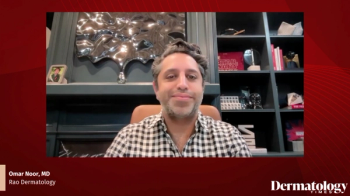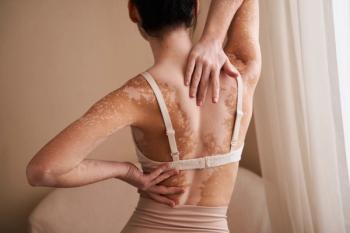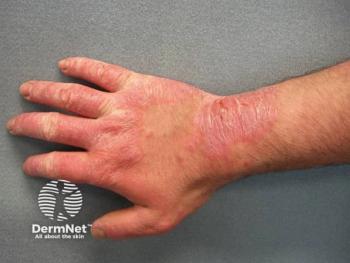
- Dermatology Times, August 2025 (Vol. 46. No. 08)
- Volume 46
- Issue 08
Evaluating Product Safety Profiles in Eczema Care: A Closer Look at the NEA Seal of Acceptance
Key Takeaways
- The NEA's Seal of Acceptance program evaluates OTC products for atopic dermatitis, ensuring they meet strict safety and sensitivity standards.
- Products undergo rigorous clinical safety testing, focusing on ingredient lists and excluding fragrances to prevent eczema flare-ups.
Discover how the NEA Seal of Acceptance helps clinicians recommend safe eczema products, ensuring quality and sensitivity for patients with atopic dermatitis.
Recommending over-the-counter (OTC) products for patients with atopic dermatitis can be challenging, particularly given the high prevalence of ingredient sensitivities and the wide variability in product formulations. The National Eczema Association’s (NEA) Seal of Acceptance program offers a voluntary, evidence informed framework for evaluating OTC products that meet defined safety and sensitivity criteria. While the absence of a seal does not imply a product is unsafe, the program provides an additional tool to support clinicians in making personalized, skin-safe recommendations.
In this Q&A, Dermatology Times speaks with Sam Iannotti, MPH, senior director of Seal of Acceptance and department operations at the NEA, to discuss how the program is designed, what testing standards are required, and how clinicians can use the seal to support personalized, safe skin care recommendations as part of comprehensive eczema management.
Q: How does the program support clinicians and their patients?
Iannotti: The goal of the seal program is to empower individuals and families in finding products that are suitable for them, their unique skin, and their lifestyle. What’s wonderful about the seal is that when you see the seal on a product, you can be assured that it has been vetted by NEA and has met strict standards established by our Scientific Oversight Committee—a group of leading dermatologists, allergists, and eczema experts. We know how challenging it can be for individuals and for families who are dealing with eczema to find products that work best for them, their lifestyle, and their skin, so we want to take one step out of that challenging experience for you by vetting these products.
Q: What happens during the clinical safety testing process, and what is required for a product to be accepted?
Iannotti: We have very strict standards that are set by our Scientific Oversight Committee who have done extensive amounts of research and have experience working in the eczema space. They know what to look for in products, what the common allergens and irritants are, and which ingredients stand out and shouldn’t be in products, or that can potentially cause issues and some flare-ups for eczema.
Within those strict standards, we require all manufacturers or brands to submit an ingredient list to us, not just the list of ingredients but their function within that specific product and the formula. We want to ensure that none of the ingredients are there to be fragrant, as well as making sure that none of the ingredients are on our “Ecz-clusion List.” In addition to all of that, we require clinical safety testing on sensitive skin to be completed by the manufacturer or brand.
Certain product categories may require a very specific type of testing, but for the most part, there are 3 specific clinical safety tests that we accept: Human Repeat Insult Patch Testing, the Cumulative Irritation Test, and Safety In-Use testing. Within those, all testing must include Fitzpatrick skin type or similar testing data that show different skin types, varying genders, age, etc. We don’t accept testing on animals. Testing can be done outside of the US, as long as it meets our requirements.
Depending on the test, we have more specifics that need to be set; for example, for HRIPT, we need a minimum of 100 participants with at least 50 of those having sensitive skin. For the SIU and CIT, there are a minimum of 25 participants, and all must have sensitive skin.
The last step of our rigorous process is being reviewed by our team of reviewers. The reviewers consist of dermatologists and allergists in tandem with our Scientific Oversight Committee’s standards. If the brand or the manufacturer meets all those requirements, then we’re excited to award them the seal, and they’re added to our product directory on NEA’s website.
Q: What types of products most often qualify for the seal, and are there particular formulations or ingredients that commonly lead to rejection?
Iannotti: [Product categories] fall within personal care, household, and OTC products: products like moisturizers, cleansers, hair care, deodorant, lip care, sunscreens, and laundry.
Moisturizers are the most common that you would see. If you were to go to our product directory, you would see that the vast majority are some form of moisturizer. But our product categories are evolving based on the needs of the community. At the NEA, we do our own research and put out surveys to the community to gather insights on how we can improve the quality of life for those living with eczema. If we receive feedback through those surveys and through our own research that we are missing a specific product category, then we look to add that to our list.
As far as ingredients go, the big one is fragrance. The product needs to be fragrance free or not have any sort of discerning scent to it, so the function of any ingredient can’t be for the sole purpose of being fragrant or making the product smell good. That’s probably our biggest callout, or the most common way that a product gets denied, that there’s some sort of strong aroma to it.
If there’s a change in formula, we require that brand or manufacturer to resubmit and go through the entire process again. They receive the licensing for our seal for a year, and at the end of the year, we require that the brand or manufacturer resubmit the ingredient list and is also stating that there’s been no change in the formula.
Q: How can clinicians get involved in the Seal of Acceptance program?
Iannotti: Reach out to soa@national eczema.org. What is so exciting about NEA’s seal is that it has been around for quite some time, and brands and manufacturers are becoming more mindful of the ingredients that they’re putting in their products. With that come more products and a need for more product reviewers. That’s a great way for clinicians to get involved, potentially becoming a reviewer and joining the seal program by being that final step in the review process of accepting or denying a product.
We hear from many manufacturers and brands that when they’re developing a new product, they have our Ecz-clusion List as well as our seal requirements in hand as they’re developing that product to ensure that they’re continuing to meet the needs of the eczema and sensitive skin community. I just think that’s so telling to both the brands and to the seal of its importance and the impact that it has on the community.
Q: Is there anything else you’d like clinicians to know about the seal program or NEA?
Iannotti: Our standards evolve over time based on what we’re hearing from the community, what we’re hearing from clinicians, and what new research has come out on specific ingredients, irritants, and allergens. Our Ecz-clusion List is not stagnant; we’re constantly meeting with our Scientific Oversight Committee to determine what changes need to be made to our standards for the seal.
If you’re interested in having documents readily available at your office for patients on the seal or other programs/resources that NEA provides, absolutely check out our website.
Articles in this issue
3 months ago
Examining Bond-Building Hair Care Treatments4 months ago
Dermatology Times August 2025 Print RecapNewsletter
Like what you’re reading? Subscribe to Dermatology Times for weekly updates on therapies, innovations, and real-world practice tips.



















